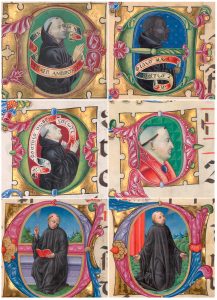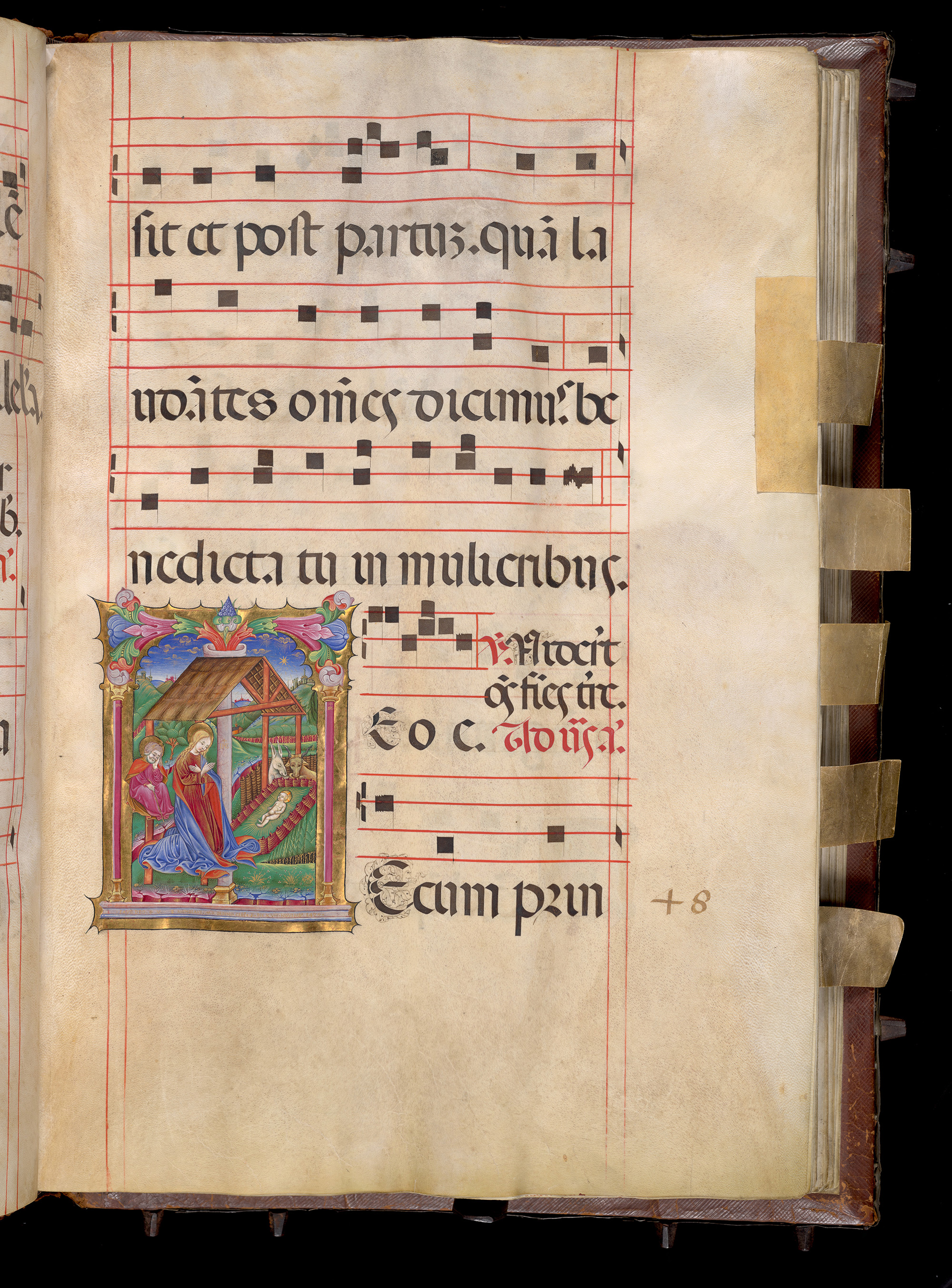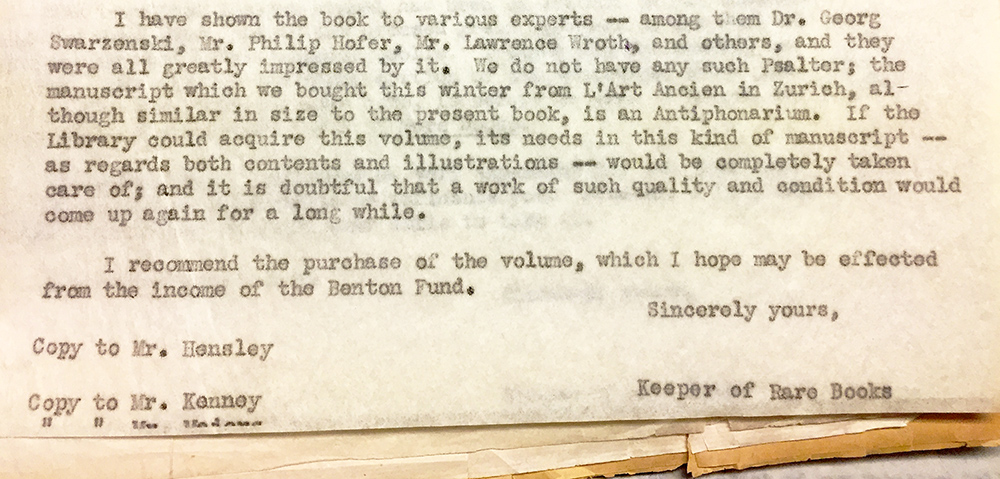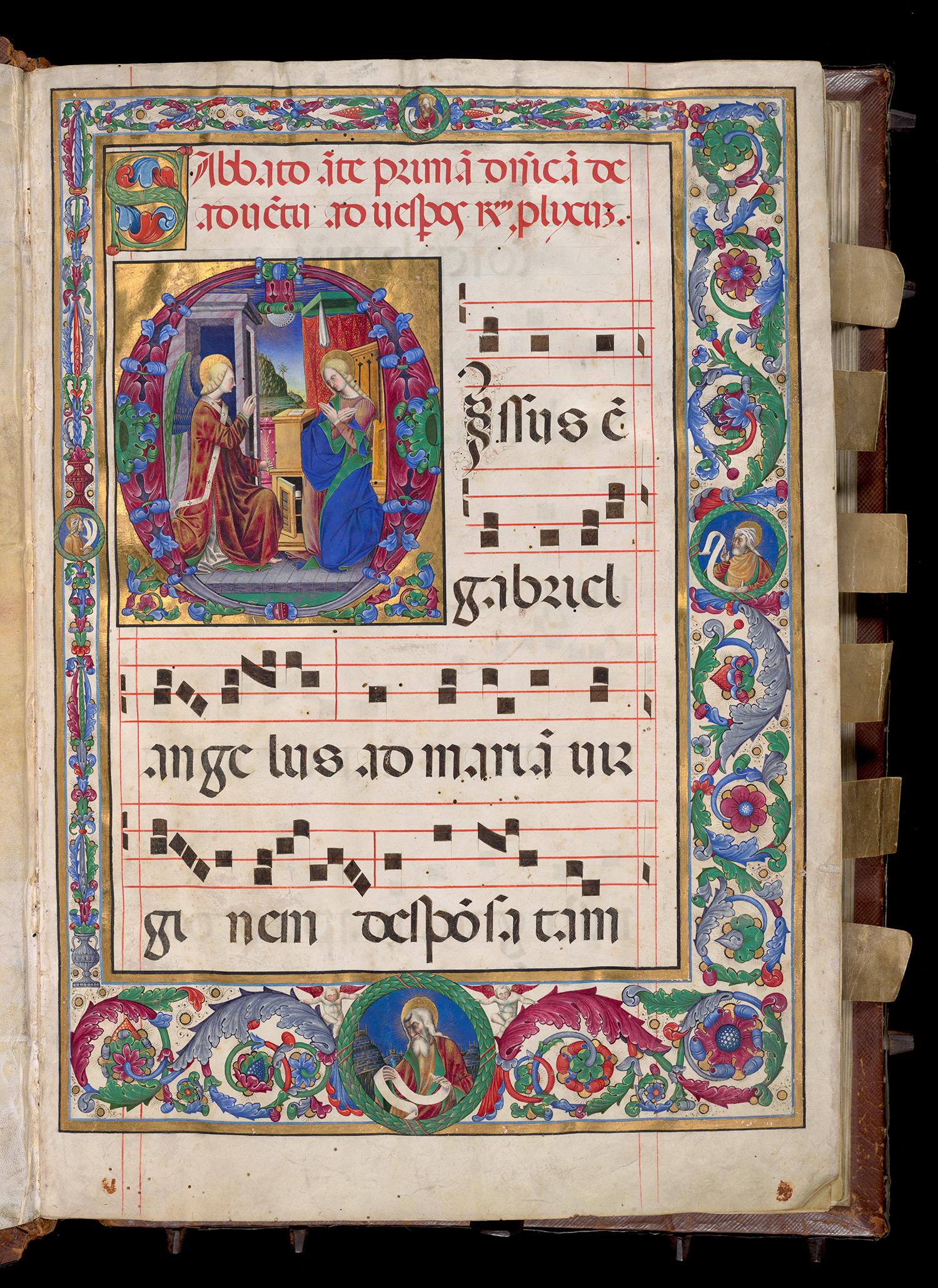 , opens a new window
, opens a new windowThanks to the generous support of the Associates of the Boston Public Library, opens a new window, the BPL recently digitized two monumental, highly decorated prayer books from our collection of medieval and early renaissance manuscripts, opens a new window. The two manuscripts -- an antiphonary, opens a new window and a psalter, opens a new window -- once belonged to a larger set of 14 choirbooks, opens a new window created for the Benedictine monastery of San Sisto in Piacenza, Italy, between 1475 and 1495. Today, these manuscripts are among the finest specimens of late-medieval art and illumination, opens a new window in the BPL's collections.
Both manuscripts were digitized at the Northeast Document Conservation Center, opens a new window (NEDCC) in Andover, Mass and, at the moment, they are the only volumes from the original set of fourteen that have been fully digitized and made freely available online.
Click here to view the psalter (MS pf Med. 97), opens a new window
Click here to view the antiphonary (MS pf Med. 120), opens a new window
One need not open either of these volumes, nor turn a single page to be struck by their appearance: each is approximately 2 feet tall, weighs nearly 40 pounds, and is bound in original, heavy wooden boards with elaborate brass armor. These are gigantic, imposing books, whose scale evokes the purpose for which they were created: to be placed on a lectern, guiding the monks of San Sisto through their daily worship.
 , opens a new window
, opens a new windowThese were never strictly utilitarian prayer books, however. Both manuscripts were conceived as treasures unto themselves, intended to impress and inspire, and they were decorated accordingly. Combined, the two manuscripts contain hundreds of illuminated initials, opens a new window and miniatures, opens a new window representing the work of several artists, including Matteo da Milano, Francesco da Castello, and the so-called Master of the Graduals of San Salvatore in Pavia.
 , opens a new window
, opens a new windowOf particular note are the twenty-six illuminated initials in the psalter attributed to Matteo da Milano, opens a new window (active 1492-1523). Matteo's initials enclose a series of varied and highly detailed portraits, which, it has been suggested, may have been painted from life, representing actual monks from San Sisto or other figures associated with the monastery.
Though these manuscripts were produced as luxury items and remained together at the monastery for centuries, their survival into the present day, along with their recent rediscovery by scholars, is something of a surprising story. The entire set was first removed from the monastery in the early 19th century by a monk and hidden in the attic of his family home, presumably to save them from confiscation during the Napoleonic occupation of Italy.
Undisturbed for decades and apparently forgotten in the attic, they were eventually sold by the monk's descendants in 1864. Over the following decades, the identity of the set was lost, along with its connection to San Sisto, as the manuscripts were sold and resold. By the early 20th century, the set had been broken apart and widely dispersed.
The BPL purchased the antiphonary from the Swiss firm l'Art Ancien in early 1940. A few months later, the library purchased the psalter from the German antiquarian bookseller Julius Hess. At the time, the common origin and provenance of the manuscripts were not yet known; they were considered complementary, but ultimately unconnected specimens. The acquisition of both, then, was a fortunate coincidence.
In fact, the true identity of the 14 San Sisto choirbooks, all of which still survive, remained unknown until very recently. In the early 2000s, the largest extant group -- eight manuscripts then held by the Hispanic Society of America in New York -- were connected to San Sisto by Joanne Filippone Overty. Shortly thereafter, other scholars identified the remaining six manuscripts, which were held in various institutions and private collections in Europe and America, including the BPL. Most of the manuscripts, whether in private hands or held by institutions, had been cataloged in one way or another. But the fact of their common origin had been lost.
As a result of the relatively recent reintroduction of the San Sisto choirbooks, they are currently objects of intense scholarly interest. In recent years, individual volumes have been featured in exhibitions in Italy and the United States, and a number of articles have appeared in scholarly journals since Overty's original work was published in 2008.
 , opens a new window
, opens a new window , opens a new window
, opens a new windowFurther reading
Filippone Overty, Joanne. "Reconstructing the Monastic Choir Books of San Sisto in Piacenza." Rivista di Storia della Miniatura 14 (2010)




Add a comment to: Recent Digitization Highlights: the San Sisto Choirbooks, 1475-1495